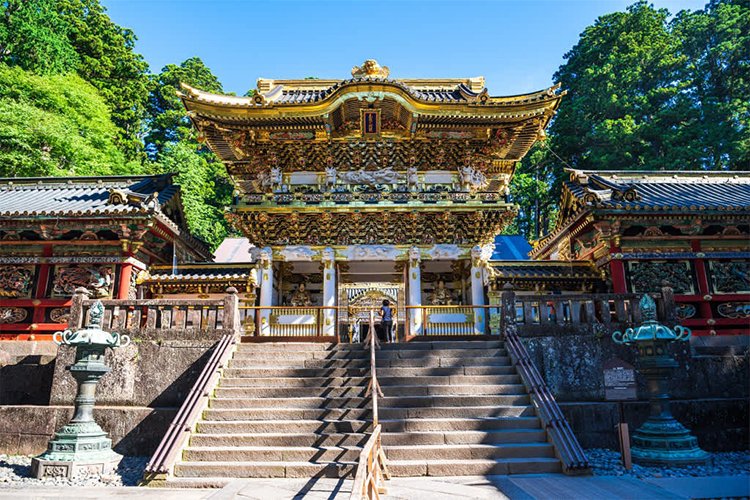Japan is a country with a rich history and culture, and its spiritual landscape is no exception. Shintoism, the native religion of Japan, has shaped the country’s traditions and rituals for centuries, and its shrines are some of the most iconic and revered sites in the country. Visiting these shrines offers a unique opportunity to connect with Japan’s spiritual heritage while exploring stunning architecture and beautiful nature. Whether you’re a history buff, a spiritual seeker, or simply someone who wants to experience Japan’s deep cultural roots, these ten traditional shrines should be on your list of places to visit.
1. Meiji Shrine (Tokyo)
Located in the bustling metropolis of Tokyo, Meiji Shrine is one of Japan’s most important Shinto shrines. Dedicated to Emperor Meiji and Empress Shoken, who played a crucial role in modernizing Japan in the late 19th and early 20th centuries, this shrine is a tranquil oasis in the heart of the city. The serene forest surrounding the shrine offers a peaceful escape from the hustle and bustle of the city, and visitors can participate in traditional Shinto rituals such as cleansing hands at the water basin or writing wishes on wooden ema tablets.

2. Fushimi Inari Taisha (Kyoto)
Famous for its thousands of bright red torii gates leading up the mountain, Fushimi Inari Taisha is one of Japan’s most famous Shinto shrines. This shrine in Kyoto is dedicated to Inari, the god of rice, agriculture, and prosperity. Visitors can hike the mountain trails lined with the torii gates, exploring smaller shrines along the way and taking in stunning views of Kyoto. The shrine is especially beautiful at sunrise or sunset when the gates glow in soft light.
3. Ise Shrine (Mie Prefecture)
The Ise Shrine is one of the most sacred and important Shinto shrines in Japan. Located in Mie Prefecture, this shrine is dedicated to the sun goddess Amaterasu, who is considered the ancestor of the imperial family. The Ise Shrine is unique in that it is rebuilt every 20 years as part of an ancient tradition that symbolizes renewal and impermanence. Visitors can experience the tranquil beauty of the shrine and the surrounding forest, which is home to centuries-old trees.
4. Toshogu Shrine (Nikko)
The Toshogu Shrine in the picturesque town of Nikko is dedicated to Tokugawa Ieyasu, the founder of the Tokugawa shogunate. Known for its intricate carvings, vibrant colors, and grand architecture, this opulent shrine is a UNESCO World Heritage Site. The shrine complex is surrounded by a lush forest, and visitors can explore various structures, including the famous Yomeimon Gate, which is decorated with detailed carvings and gold leaf.

5. Kinkaku-ji (Golden Pavilion) (Kyoto)
Although Kinkaku-ji, also known as the Golden Pavilion, is primarily a Zen Buddhist temple, it also houses a Shinto shrine that pays homage to the gods. The temple’s shimmering gold exterior faces a tranquil pond, offering one of Japan’s most stunning views. The temple is part of a larger complex with beautiful gardens and walking paths that provide visitors with a tranquil environment in which to reflect and enjoy the beauty of nature.
6. Izumo Taisha (Izumo)
Located in the western part of Japan in Izumo, Izumo Taisha is one of the oldest and most significant Shinto shrines in the country. The shrine is dedicated to Okuninushi, the god of marriage and good fortune, and is known for its giant sacred rope (shimenawa) hanging in the main hall. Izumo Taisha is an important site for those seeking blessings related to relationships and marriage. The shrine is surrounded by lush forests and has a deeply spiritual atmosphere that draws visitors from all walks of life.
7. Senso-ji Temple (Asakusa, Tokyo)
Senso-ji Temple, located in the historic Asakusa district of Tokyo, is the oldest and one of the most popular Buddhist temples in Japan. Although it is primarily a Buddhist site, the temple also has a small Shinto shrine dedicated to the god of good fortune on its grounds. The entrance to the temple is lined with traditional shops selling souvenirs, snacks and religious artifacts, creating a lively atmosphere. The shrine is a great place to experience both the spiritual and cultural heritage of Japan.

8. Kamigamo Shrine (Kyoto)
Located in northern Kyoto, Kamigamo Shrine is one of the oldest and most important Shinto shrines in the city. This historicThe shrine is dedicated to the ancestral gods of the Kamo family, who are believed to protect the city of Kyoto. The shrine’s beautiful grounds include tranquil ponds, gardens, and ancient trees, providing a serene atmosphere for reflection and prayer. Kamigamo Shrine is also famous for its annual Aoi Matsuri, one of Kyoto’s most famous festivals.
9. Katori Jingu Shrine (Chiba Prefecture)
The Katori Jingu Shrine in Chiba Prefecture is the main shrine of over 400 Katori shrines throughout Japan. The shrine is dedicated to Futsunushi-no-Mikoto, the god of military protection, and has a long history dating back over 2,000 years. Visitors can admire the shrine’s impressive torii gate, sacred tree, and beautiful forest that surrounds it. Katori Jingu is a peaceful and spiritual place, perfect for those seeking a quieter, more introspective experience.
10. Kasuga Taisha Shrine (Nara)
The Kasuga Taisha Shrine in Nara is one of Japan’s most famous Shinto shrines, and is particularly known for its hundreds of stone and bronze lanterns that line the paths to the shrine. Dedicated to the Fujiwara family’s guardian deity, the shrine is located in the lush, tranquil forests of Nara Park. Kasuga Taisha is also known for its annual lantern festivals, where thousands of lanterns are lit, creating a magical atmosphere. The shrine’s architectural beauty and spiritual significance make it a must-visit.
Conclusion
Japan’s traditional shrines offer much more than just spiritual sites—they offer a chance to delve into the country’s deep-rooted culture and history. From the towering gates of Fushimi Inari Taisha to the serene, sacred atmosphere of Ise Grand Shrine, each shrine tells a unique story and offers a different perspective on Japan’s spiritual traditions. Whether you’re interested in history, nature, or just a moment of tranquility, these ten shrines offer an enriching experience that will stay with you long after your visit.







